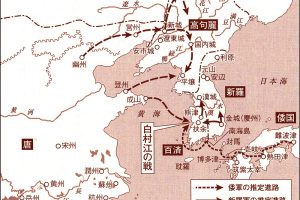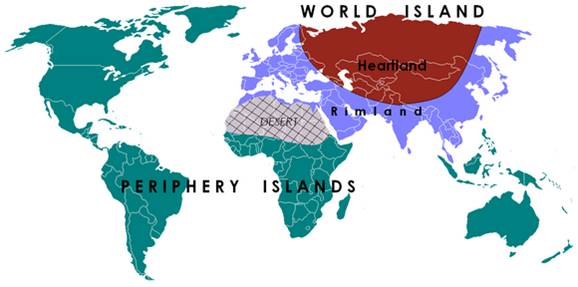Note: The following is a reprint of the headline and content of the article "hostility toward China that binds Japan since ancient times" published in December 2020. When I was re-reading Jitsuro Terashima's essay on modern Japan-China relations published in the January 2016 issue of Sekai, "Five Years of Destiny to One Hundred Years," he said, "If Japan loses its equanimity toward China, Japan will go astray. Japan 100 years ago. turned the long-standing inferiority complex against China into a superiority complex....China, which had been an object of respect and envy, became a symbol of stagnation and decline." In light of the current state of Japan-China relations, the historical depth and danger of the Japanese people's rivalry with China, which has been rooted in them since ancient times, must be more deeply recognized.
- - - - - - - - - - - - - - - - - - - - - - - - - - - - - - - - - - - - - - - - - - - - - - - - - - - - - - - - - - - - - - - - - - - - - - - - ーーーーーーーーーーーーーーー
The rivalry of the Japanese against the Chinese turned into a sense of superiority with the victory of the Sino-Japanese War at the end of the 19th century. In the ensuing invasion of China, the slogans of ``punishing the tyrannical Chinese,'' ``youcho'' and ``punishment of the Chinese,'' became the slogans. Japanese soldiers who participated in the war despised it as chankoro. After Japan's defeat in 1945, such insults disappeared from the surface of society. However, the roots of the imperial consciousness to confront China and the hostility toward China that are imprinted on the Japanese people go back to ancient Wa. If China reconsiders this deep-rooted view of China and aims to completely break away from the pre-war system, it should put the brakes on its participation in the ongoing Cold War between the United States and China and the US-led strategy to contain China.
■A small empire against a great empire
Kazuhiro Kuramoto, a historian of ancient Japanese politics, clearly explains that ``the roots of modern Japanese aggression in Asia lie in ancient Wakoku and Japan.'' ("Ancient History of War in Japan" Monument to King Kota, from Shiramurako to the Invasion of Toi, Kodansha Gendai Shinsho)
Below, I will briefly introduce the final chapter of the book, ``Japanese History of War: What Flows Deep in Modern Japan,'' with some personal opinions.
Japan and Wakoku in the pre-modern period had very little experience of foreign wars, except for those that repelled the invasion of foreign powers. There are only three examples of actual wars fought outside Japan: the battle against Goguryeo in the 5th century, the Battle of Hakusonko in the 7th century, and the invasion of Korea by Hideyoshi Toyotomi in the 16th century.
 The only wars with China were the Battle of Shiramurako and Hideyoshi's invasion of Korea. However, the battlefield is the Korean Peninsula, and there have been no cases of invading China. The Sino-Japanese War and the Russo-Japanese War, which were fought over the Korean issue in modern times, also made the Korean Peninsula one of the main battlefields.
The only wars with China were the Battle of Shiramurako and Hideyoshi's invasion of Korea. However, the battlefield is the Korean Peninsula, and there have been no cases of invading China. The Sino-Japanese War and the Russo-Japanese War, which were fought over the Korean issue in modern times, also made the Korean Peninsula one of the main battlefields.
Why did Japan, which had almost never waged a foreign war, suddenly start invading Asia in the modern era, starting with Korea? Of course, directly, there is a way to clarify the imperialistic aspirations of the feudal clique government after the Meiji Restoration, which sought hegemony in East Asia. However, its roots lie in the ancient Wakoku and Japan, where a desire to become a small empire to compete with the Greater China Empire was cultivated and accumulated over a long history. Through this process, views of China, Korea, and enemy nations were reproduced over and over again, and were planted in the DNA of modern Japanese people.
The key word is "small empire in the East". Japan and Wakoku were inferior to the Chinese Empire, but superior to the Korean nations, and were regarded as small empires that ruled over other countries. At first glance it seems absurd allegations, but for example (1) the recognition that Baekje, Gaya, and Silla were 'subjects' from the end of the fourth century to the beginning of the fifth century, The memory of being recognized by the emperor of the Song dynasty was deeply imprinted in his memory, which had a great influence on later generations.
On the other hand, Hidehiro Okada, an expert in East Asian history, summarizes the circumstances during this period in his book "The Birth of Japanese History" (Chikuma Shobo) as follows.
“In the mid-seventh century (660), the Tang Empire allied with Silla and destroyed Baekje, an ally of Wa. The Wa people, who were shut out of the Asian continent and isolated in the sea, gathered together to create the first unified kingdom of the Japanese archipelago, Japan. was compiled and completed in 720.” “Japan expressed in the “Nihon Shoki” is a kind of China that is opposed to China and is a nation that inherited its own orthodoxy from heaven. Because it is based on ideology, it has made China and Japan incompatible, and this has long defined the character of Japan.”
Since then, Japan, ruled by an unbroken line of emperors, has been defined as "another empire that competes with the Chinese Empire for control over the Korean Peninsula."
■The driving force behind the Meiji Restoration
The idea of reverence for the emperor appeared in the middle of the Edo period as the delegation theory that ``the shogun is entrusted with the imperial administration (national administration) by the emperor and governs Japan''. In 1644, China's Ming Dynasty fell, and the Han race was destroyed by the Manchu Qing. Soko Yamaga argued that "Japan is China." The establishment of Confucian thought in Japan meant the establishment of Kaei thought in Japan, and formed the prototype of the modern imperial view of history, and became the basis for the 'Japanese version of Chinese thought.'
Kokugaku, a school of classical studies that developed from the middle to the late Edo period, leans toward the spirit and culture unique to Japan before the introduction of Confucianism and Buddhism, and includes the Kojiki, Nihonshoki, Shinto, poetry, and Yusoku kojitsu. The object of this study is research in various fields. At the end of the Tokugawa period, Atsutane HIRATA emphasized the idea of revival, giving rise to Mitogaku, the cornerstone of the imperial historical view.
As we have seen in detail above, the idea of reverence for the king and the expulsion of foreigners is imprinted with a disdain for Korea and a rivalry with China. If you understand this, you can understand the pathos that today's Japanese government follows the United States and actively participates in the Chinese encirclement network.
Aizawa Shoshisai, a scholar of Mitogaku, is said to have been a must-read for patriots of the Meiji Restoration, influencing Shinsaku Takasugi, Genzui Kusaka, and Hirobumi Ito and Aritomo Yamagata, who were geniuses of the Meiji Restoration. 'Shinron', gave Toshimichi Okubo a hint of the relocation of the capital to Tokyo, and advocated the conquest of Manchuria as the first step toward conquering the world. Sato Nobuchi's ``confusing secret plan'', which is said to have been the ``confused plan'', and ``the true meaning of the national polity'' published by the former Ministry of Education just before the start of the war with the United States, can be said to be variations of the Japanese version of Chinese thought since ``Nihonshoki.''
 In this blog, as one of the answers to the question "Why did Japan suddenly start invading Asia in the modern era after the Meiji period, starting with Korea?" Pointing out the Eurasian siege strategy to contain it, I have introduced the Anglo-American Heartland Theory (see left chart), which geopolitically analyzes the dynamics of Eurasian international relations, originated by Halford Mackinder. In the Meiji Restoration, we overlooked the aspect that the Meiji Restoration, which was a change in the Japanese system due to the movement to overthrow the shogunate led by Satsuma and Choshu, was used by the world hegemonic power, Britain, together with the United States, to conquer Eurasia with Russia and China at its core. must not.
In this blog, as one of the answers to the question "Why did Japan suddenly start invading Asia in the modern era after the Meiji period, starting with Korea?" Pointing out the Eurasian siege strategy to contain it, I have introduced the Anglo-American Heartland Theory (see left chart), which geopolitically analyzes the dynamics of Eurasian international relations, originated by Halford Mackinder. In the Meiji Restoration, we overlooked the aspect that the Meiji Restoration, which was a change in the Japanese system due to the movement to overthrow the shogunate led by Satsuma and Choshu, was used by the world hegemonic power, Britain, together with the United States, to conquer Eurasia with Russia and China at its core. must not.
■ Reversal of superiority
The catastrophic failure of the Japanese version of Chinese thought was the acceptance and defeat of the Potsdam Declaration on August 15, 1945. The Rockefeller Foundation played a major role in formulating US policy toward Japan during and after the war. 1951 John Rockefeller III, who visited Japan as a member of a delegation led by John F. Dulles in the following year before the conclusion of the San Francisco Peace Treaty, was in the midst of the Pacific War. Participated in deliberations on the policy of the occupation of Japan held at the Council (CFR). He suggested that Japan should take advantage of its contempt for Korea, its sense of superiority over China, Russia, and other Asian countries, and its strong desire to be treated on an equal footing with the United States, Britain, and other Western countries.
China has overtaken Japan in terms of economic power, military presence, and international influence, and the Japanese have lost their sense of superiority over China. Today, when the Cold War between the United States and China has become decisive, Washington has taken advantage of the humiliation and antipathy toward China, and the desire to restore a sense of superiority held by most Japanese, to turn the Japanese government into an important part of the Chinese encirclement network. I make the most of it as a piece.
Looking calmly at the history of Japan-China relations that spans nearly 2,000 years, it is time to break free from the anachronistic nationalism of the ``battle for hegemony in East Asia'' and its feuds, and to seek a new way of peace and coexistence. there is First of all, it is necessary to liquidate the imperial view of history, which can be said to be the source of China's disdain and superiority against China, and the pre-war resume, which is the root of war responsibility.
